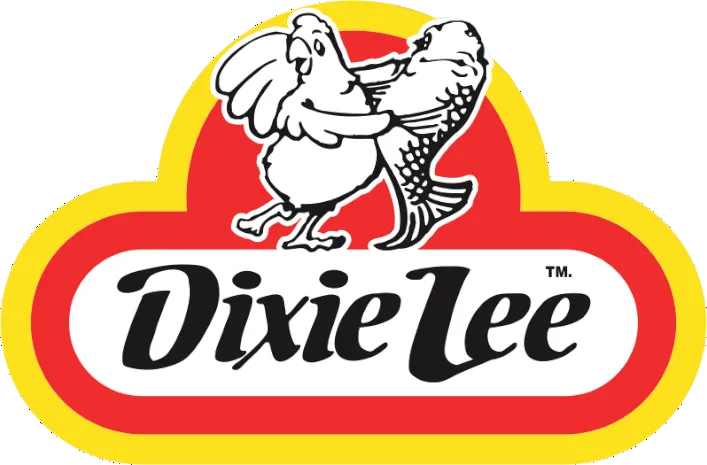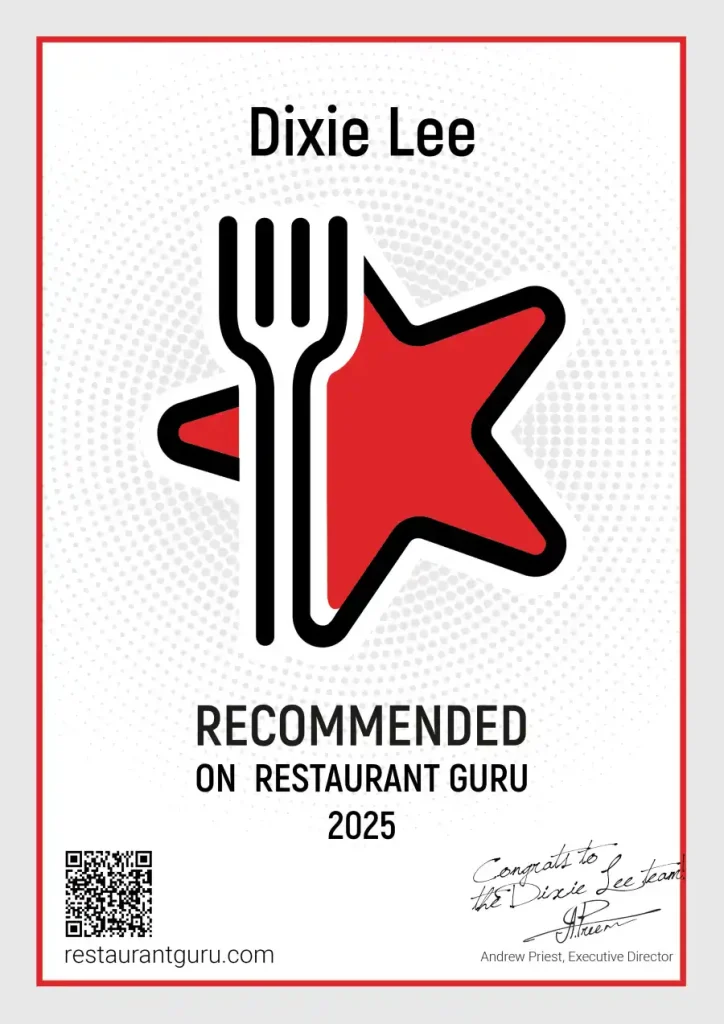Begin by confirming that your goals align with Dixie Lee’s hands-on, quick-service model. Then verify whether franchise territory is available for Penetanguishene. Assess local demand by reviewing demographics, traffic patterns, and competitor presence to determine market viability.
Prepare a detailed startup budget that includes the franchise fee, build-out and equipment costs, permits, point-of-sale and IT systems, initial inventory, and sufficient working capital. Carefully review the Franchise Disclosure Document (FDD) to understand ongoing royalties, advertising fees, and any other recurring obligations.
Arrange financing supported by a 3-year pro forma and the documentation lenders require. Seek funding options that cover both initial costs and a buffer for early operating expenses.
Target high-visibility sites with strong vehicle and foot traffic and consider locations with drive-thru potential to capture convenience-focused customers. Confirm zoning, building permits, and public health approvals early to avoid delays in opening.
Proceed with build-out according to brand standards, complete franchise training programs, and implement required operational systems. For launch planning, develop a tourism-savvy marketing strategy that leverages Penetanguishene’s seasonal visitors—coordinate local promotions, signage, and community outreach to drive initial awareness and sustain traffic.
Key Takeaways
- Confirm franchise fit: hands-on management, quick-service comfort food standards, and territory availability in Penetanguishene and nearby trade areas with Dixie Lee.
- Estimate startup and ongoing costs: franchise fee, buildout, equipment, inventory, IT, permits, working capital, royalties, and ad/tech fees per the FDD.
- Build a finance-ready business plan: market analysis, 3-year projections, break-even, staffing, marketing budget, risk controls, and lender documents for SBA/bank/equipment financing.
- Identify prime sites: high-visibility corridors, ample parking, end-caps or pads with drive-thru, strong co-tenancy, and favorable local demographics and traffic.
- Navigate approvals: zoning for restaurant/drive-thru, building/sign/fire permits, and Simcoe Muskoka Health Unit food premises registration and inspections.
Assess Dixie Lee’s Franchise Fit and Requirements
Clarity comes from matching your goals with Dixie Lee’s model. Start by defining why you want a franchise in Penetanguishene: community presence, operational control, or growth potential. Then compare those aims to Dixie Lee’s brand promise—quick-service comfort food, consistent standards, and hands-on management.
Confirm territory availability for Penetanguishene and nearby trade areas. Evaluate whether local demographics, traffic patterns, and competitors align with a neighborhood-focused chicken and seafood concept. Review operational expectations: food safety compliance, staffing plans, training commitments, and daily involvement. Assess your timeline readiness for site selection, build-out coordination, and opening milestones.
Check your ability to follow brand systems, marketing guidelines, and quality controls. Finally, request Dixie Lee’s franchise kit and schedule an introductory call to verify alignment before moving forward.
Estimate Startup Costs, Fees, and Ongoing Royalties
With your fit confirmed, the next step is to map the money you’ll need—from upfront build-out to long-term fees. List major startup costs: franchise fee, site selection and lease deposits, design and construction, equipment and signage, initial inventory, point-of-sale and IT, permits, insurance, professional services, and pre-opening training and payroll. In Penetanguishene, factor local construction rates, utility hookups, and any municipal fees.
Estimate working capital to cover several months of rent, wages, food costs, and marketing until sales stabilize. Review Dixie Lee’s Franchise Disclosure Document for exact ranges and required reserves. Note ongoing fees: royalty (a percentage of gross sales), brand or ad fund contributions, tech or software subscriptions, and renewal or audit fees. Build a monthly expense model, then stress-test it with conservative sales scenarios.
Secure Financing and Build Your Business Plan
Before you seek capital, lock in a tight business plan that proves your Dixie Lee in Penetanguishene can earn and repay. Outline your concept, target customer, competitive advantages, and brand standards you’ll adopt. Translate that into three-year financials: startup budget, working capital, sales forecasts, food and labor percentages, break-even, and cash flow.
Build credibility with local market data, supplier quotes, franchise fee schedules, and a staffing plan. Add a marketing budget tied to realistic customer counts and ticket sizes. Include risk controls: contingency funds, sensitivity tests, and cost-monitoring routines.
Then assemble financing. Compare an SBA 7(a) loan, traditional bank debt, and equipment leasing. Prepare lender-ready documents: personal financial statement, credit report, collateral list, and franchise disclosure items. Show how loan proceeds map to uses and repayment.
Identify and Evaluate Sites in Penetanguishene
Even as your financing comes together, start scouting Penetanguishene locations that match Dixie Lee’s footprint and demand. Prioritize high-visibility corridors like Main Street and routes feeding Midland, Georgian Bay attractions, schools, and marinas. Look for strong daily traffic, easy right-in/right-out access, and ample parking for quick-service turnover.
Assess trade area demographics within 5–10 minutes: household counts, median income, and daytime population from nearby employers and institutions. Map competitors—fried chicken, burgers, pizza—and identify gaps such as underserved neighborhoods or dinner-heavy zones. Favor end-cap units or pads with drive-thru potential and clear signage lines.
Evaluate co-tenancy. Grocery-anchored plazas, fuel stations, and pharmacies drive repeat visits. Confirm realistic delivery reach, snow clearing patterns, and winter walkability. Run simple sales models using traffic counts and capture rates to rank sites.
Navigate Municipal Zoning, Permits, and Health Approvals
Next, move quickly to confirm your Dixie Lee can legally operate at the shortlisted sites by aligning zoning, permits, and health approvals in Penetanguishene and Simcoe County. Check the Town’s zoning by-law to verify restaurant use, drive-thru allowances, parking minimums, signage limits, and hours. If you need a variance, speak with Planning early and file the proper application.
Confirm building classification and occupancy with Building Services. You’ll likely need building and sign permits; submit stamped drawings and pay fees. Coordinate fire code compliance: hood suppression, egress, alarms, and extinguishers.
Contact the Simcoe Muskoka District Health Unit for food premises requirements. Prepare a floor plan showing sinks, refrigeration, handwash stations, and finishes. Register your food premises, schedule pre-opening inspections, and document HACCP-style procedures, temperature logs, pest control, and sanitation.
Plan Build-Out, Equipment, and Timeline to Opening
Now you’ll map your site layout and design to Dixie Lee’s operational standards and your floorplan constraints. You’ll set an equipment sourcing plan that locks in vendors, specs, lead times, and contingencies. Then you’ll build a construction timeline with milestones for permits, build-out phases, inspections, installs, and soft opening.
Site Layout and Design
While your lease is finalizing, lock in a site layout that optimizes flow, speed, and brand consistency. Start with the customer expedition: clear entry, intuitive order points, visible menu boards, and an efficient pickup path. Separate dine-in, takeout, and delivery handoff to prevent congestion. Position the kitchen for short, straight-line movement between prep, cook, assembly, and packaging. Keep handwashing and sanitation within easy reach.
Design your front-of-house to showcase Dixie Lee’s brand: warm lighting, durable finishes, and signage that’s easy to read. Plan for ADA compliance, queue management, and stroller-friendly aisles. Map utility runs (electrical, plumbing, ventilation) to match equipment positions and reduce rework. Build a phased schedule with milestones for permits, inspections, and fit-out, including buffer time for local approvals.
Equipment Sourcing Plan
How do you lock in the right equipment at the right price without delaying opening day? Start by finalizing your equipment list with Dixie Lee’s specifications: fryers, hoods, refrigeration, prep tables, POS, and smallwares. Get three quotes per item from approved vendors, including delivery, installation, and warranty terms. Ask for lead times in writing and identify long-lead items first.
Create a sourcing calendar backward from target opening. Place deposits on long-lead equipment now; schedule shorter-lead pieces later to manage cash. Bundle orders to reduce freight, but separate critical items so one delay doesn’t stall everything. Verify utility requirements with your plans to avoid rework. Lock maintenance agreements and spare parts for high-wear items. Track orders weekly, confirm ship dates, and keep alternates ready.
Construction Timeline Milestones
Blueprints become your clock: map the build-out from permit submission to soft opening with clear, dated milestones. Start by locking permits and inspections on a calendar: zoning sign-off, building permit, health, fire, and final occupancy. Sequence trades to avoid downtime—demo, framing, mechanical, electrical, plumbing, then finishes.
Order long-lead equipment early based on approved layouts. Align delivery with utilities-on and flooring complete. Schedule hood install, grease trap, refrigeration, and POS before final inspections. Build in buffer days for weather, backorders, and re-inspections.
Set target dates:
- Week 1–2: permits submitted, GC mobilized.
- Week 3–6: rough-ins and ventilation.
- Week 7–8: finishes, lighting, signage.
- Week 9: equipment set, utilities tested.
- Week 10: health and fire inspections.
- Week 11: staff training.
- Week 12: soft opening.
Recruit, Train, and Market for a Tourism-Driven Launch
You’ll map a seasonal staffing strategy that aligns with summer tourism surges and shoulder seasons. Next, you’ll schedule targeted training to handle peak volumes, speed, and guest service standards. Then you’ll layer marketing that attracts visitors while keeping a trained bench ready to scale up quickly.
Seasonal Staffing Strategy
A smart seasonal staffing strategy positions your Dixie Lee to capture Penetanguishene’s summer tourism surge without overextending payroll. Start by forecasting traffic using marina events, cruise schedules, and local festivals. Build a roster that blends experienced core crew with flexible student hires and weekend warriors. Offer clear shift tiers, reliable hours, and tip-sharing transparency to enhance retention. Use concise job posts that highlight waterfront vibes, fast-paced teamwork, and end-of-season bonuses.
| Focus | Action |
| Timing | Open hiring 10–12 weeks pre-summer; stagger onboarding to match demand curves. |
| Sourcing | Partner with local schools, tourism boards, and lakeside employers for referrals. |
| Roles | Cross-utilize cashiers, expo, and fry to cover breaks and spikes efficiently. |
| Scheduling | Use split shifts on peak days; lock anchor shifts for consistency. |
Track performance and adjust headcount weekly.
Training for Peak Seasons
Before summer crowds hit the waterfront, lock in a tight training plan that mirrors real peak conditions. Build modules for order accuracy, speed, food safety, and guest recovery. Use time-boxed drills: two-minute ticket times, batch frying, and synchronized expo. Cross-train cashiers on fryers and packers on registers to reduce bottlenecks.
Stage mock rushes using weekend tourist volumes. Pump in noise, stack mobile orders, and practice curbside handoffs. Teach scripts for upsells, allergy questions, and calm conflict resolution. Pair rookies with mentors and score them on clear KPIs: throughput, waste, and mystery-shopper scores.
Schedule refreshers before long weekends. Rotate star performers into trainer roles. Capture best practices on short videos. Align marketing promos with trained capacity so you don’t overpromise and underdeliver.
Conclusion
Confirm that Dixie Lee aligns with local demand and your business goals, secure financing, and select a Penetanguishene site that will serve both residents and seasonal visitors. Work closely with the town on zoning, building permits, and public health inspections to ensure compliance before construction begins. Plan the build-out and specify required kitchen and front-of-house equipment, and establish a realistic pre-opening timeline with milestones for construction, inspections, and supplier setup.
Recruit and train a capable team with clear roles, operational procedures, and food-safety certification. Develop opening marketing that targets tourism-season traffic and fosters local partnerships with nearby businesses and community organizations to drive steady foot traffic. Maintain tight operational controls, prioritize friendly customer service, and track financial and performance metrics accurately so the business can grow responsibly.


